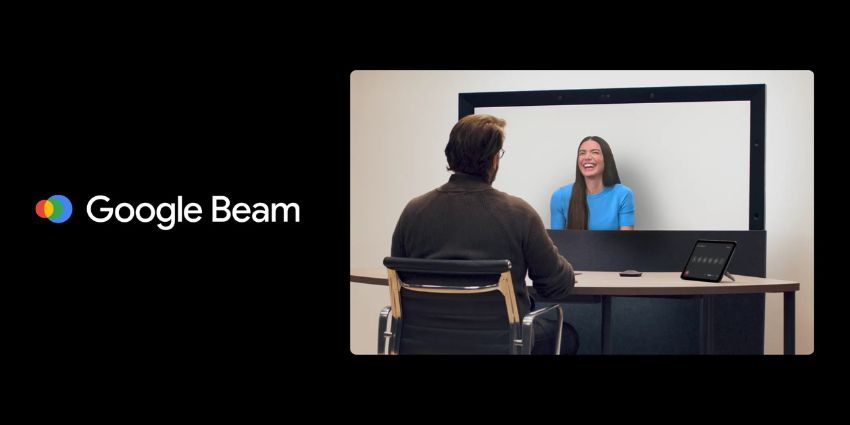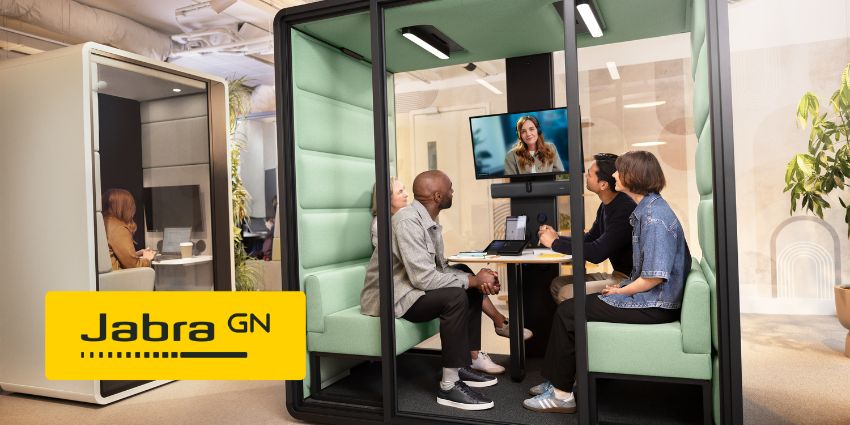First teased over four years ago, Google’s Project Starline — the company’s ambitious take on 3D video calling — is finally becoming a reality.
At Google I/O 2025, the technology was officially rebranded and launched under a new name: Google Beam.
The tech aims to make you feel like you’re in the same room as someone when you’re on a video call, but instead of using headsets or glasses, it relies on cameras, mics, and AI technology.
“Project Starline enabled remote conversations that felt remarkably like being in the same room, all without the need for specialised glasses or headsets,” said Andrew Nartker, General Manager, Google Beam.
The Google Beam platform will use AI to enable a new generation of devices that help people make meaningful connections, no matter where they are.”
“The combination of our AI video model and our light field display creates a profound sense of dimensionality and depth.”
“This is what allows you to make eye contact, read subtle cues, and build understanding and trust as if you were face-to-face.”
How Does It Work?
It’s Powered by AI, and Not Just Any AI: At the heart of Google Beam is a six-camera volumetric video model. This tech transforms standard 2D video feeds into realistic, fully 3D experiences, making it feel like you’re in the same room as the person on the other end of the call.
Real Eye Contact, Subtle Cues, and True Depth: With light field display and advanced AI processing, Beam allows for natural eye contact and the ability to read nonverbal cues. It’s the kind of presence that typical video calls can’t match.
Seamless Integration With the Cloud: Beam is built on the power and scale of Google Cloud, which means it’s designed with enterprise-grade reliability in mind. It can also integrate into existing workflows, so businesses can adopt it without overhauling their current systems.
Designed for Real Connection: Google says the mission behind Beam is to help people forge meaningful connections, no matter the distance. Whether it’s for a high-stakes business meeting or a heartfelt conversation, the tech aims to make every interaction feel personal and intuitive.
The company says it’s also exploring the introduction of speech translation with Beam, which would allow meeting participants to have authentic, near real-time translated conversations while maintaining voice, tone and expressions.
While the tech currently only supports one-on-one calls, Google says group calling will launch soon.
Who is This Aimed At?
Google has not revealed any details of the pricing structure for Beam, other than saying it will be priced comparably to existing videoconferencing systems.
However, they have been keen to name-drop a number of major partners already on board.
“The response to Google Beam has been inspiring, and a range of companies are ready to bring it to their teams, including top global organisations like Deloitte, Salesforce, Citadel, NEC, Hackensack Meridian Health, Duolingo and Recruit,” added Nartker.
Having these big names on board will help boost Beam’s market presence, but the key question for IT leaders and buyers will ultimately be, “Do I actually need this, and can I afford it?”
Gimmick or Must-Have Tech?
UC leaders are under pressure to make hybrid work seamless, and having more informal, high-context communication could support better decision-making, employee engagement, and culture building.
For example, feeling like you’re in the same room as someone while on a video call could be highly beneficial when hiring workers. In the UK, one in five staff currently working in the National Health Service (NHS) were recruited from overseas. Being able to read subtle cues and develop a more personal approach to the interview process could greatly enhance this process.
Other issues related to well-being could boost remote teams in ways traditional video can’t support. The phenomenon of “Zoom fatigue”, a general weariness of having to undertake a large number of calls using video technology such as Zoom, Meet, or Teams, has been well established, but recent research has found that this unease may run deeper.
A 2025 study published in PLOS One found that people dissatisfied with their facial appearance experience greater virtual meeting fatigue. Researchers surveyed 2,448 remote workers about their satisfaction with their facial appearance during virtual meetings.
Participants rated statements reflecting their feelings, such as being depressed about their looks or wanting to change their appearance. The survey also explored how often they used filters, avatars, or image enhancement tools and whether they chose to hide their self-view during calls. The researchers went on to say that this can, in turn, harm workplace productivity and individual well-being.
While the impact tools like Beam have on this is unclear, hyper-realistic meetings could mean employees feel more pressure to look and behave a certain way or feel the boundaries between work and personal space diminish.







